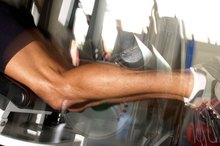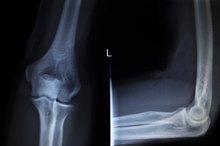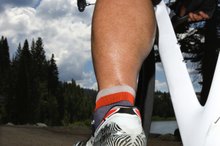What does fact checked mean?
At Healthfully, we strive to deliver objective content that is accurate and up-to-date. Our team periodically reviews articles in order to ensure content quality. The sources cited below consist of evidence from peer-reviewed journals, prominent medical organizations, academic associations, and government data.
- American College of Sports Medicine: Delayed Onset Muscle Soreness (DOMS)
- American College of Sports Medicine: Delayed Onset Muscle Soreness (DOMS)
The information contained on this site is for informational purposes only, and should not be used as a substitute for the advice of a professional health care provider. Please check with the appropriate physician regarding health questions and concerns. Although we strive to deliver accurate and up-to-date information, no guarantee to that effect is made.
Should I Apply Ice or Heat for Post-Run Soreness?
Nothing ruins that runner's high quicker than a twinge of muscle soreness. Soreness can be a sign of injury, but for new runners it may simply be delayed onset muscle soreness 1. Ice and heat are among the more popular treatment options for post-run muscle soreness. Whether you should use ice or heat depends upon the nature of your symptoms 3. While applying ice or heat may ease your symptoms, such treatments do not speed up the healing process 3. If soreness worsens or persists beyond 48 hours, consult your doctor.
If you are experiencing serious medical symptoms, seek emergency treatment immediately.
Muscle Soreness Causes
New runners, especially those running frequent downhill routes, may be more prone to delayed onset muscle soreness, which is triggered by novel muscle movement and eccentric loading of muscles 1. According to the American College of Sports Medicine, completing a single exercise session that triggers soreness offers a protective effect when performing that same exercise in the future 1.
While soreness after a run often resolves on its own with minimal treatment, experiencing pain after a run may be a sign of a muscle or joint injury. Overexertion or poor form can trigger muscle pain. If you experience debilitating pain or extreme swelling, seek prompt medical attention.
- New runners, especially those running frequent downhill routes, may be more prone to delayed onset muscle soreness, which is triggered by novel muscle movement and eccentric loading of muscles 1.
- Overexertion or poor form can trigger muscle pain.
Benefits of Ice
How to Treat Severe Muscle Soreness From Weightlifting
Learn More
Applying ice helps reduce inflammation and may offer pain relief because it numbs the affected area. By restricting blood flow, ice treatment can help reduce swelling. Ice is most effective for acute injuries and should be applied up to six times within the first 48 hours for 15 to 20 minutes at a time. Do not place an ice pack directly on the skin. Wrap it in a towel to prevent tissue damage.
- Applying ice helps reduce inflammation and may offer pain relief because it numbs the affected area.
Benefits of Heat
Heat increases blood flow. It can help relieve the soreness caused by stiff muscles, and it may reduce the risk of muscle spasms. Heat may be particularly effective in treating the neck and back. If you are dealing with mild, chronic soreness, applying heat after your run may help ease symptoms. Heat treatment can be applied in moist form with a warm towel or in dry form with a heating pad.
- Heat increases blood flow.
- If you are dealing with mild, chronic soreness, applying heat after your run may help ease symptoms.
Proceed with Caution
Knots & Pain in Lower Leg
Learn More
Ice and heat treatment may not be appropriate for those with circulation issues and should not be used on open wounds. Use caution to prevent burns when using heat treatment. Using heat can also increase inflammation, exacerbating some injuries.
RICE -- rest, ice, compression and elevation -- is a typical approach for treatment of muscle soreness.
Allow yourself sufficient healing time before running again. While engaging in warm-up exercises such as jogging or jumping jacks may not prevent delayed onset muscle soreness, they can prepare muscles for physical activity and reduce risk of injury 1.
- Ice and heat treatment may not be appropriate for those with circulation issues and should not be used on open wounds.
Related Articles
References
Writer Bio
Joy Johnston has been an online journalist since 2005. She has served as senior producer for the health news website Sharecare and as a digital producer for the "Atlanta Journal-Constitution," where she helped develop the health channel. Johnston has also covered ways to stay fit in Atlanta.









